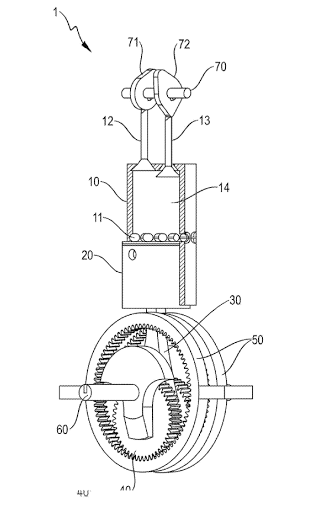When you hear about Porsche, you think of iconic performance, precision engineering, and a steadfast commitment to innovation. But in a world transitioning to electric vehicles (EVs), it might seem surprising that Porsche is still investing in petrol-powered engines. Enter Porsche’s new 6-stroke engine—a technological leap that aims to redefine internal combustion engines. But before we dive into this bold innovation, let’s first remind ourselves how a conventional engine works and what makes Porsche’s design revolutionary.
How the Traditional 4-Stroke Engine Works
Most petrol-powered cars today use a 4-stroke engine, a time-tested design that has powered vehicles for over a century. Here’s a quick breakdown of the four strokes:
1. Intake Stroke: Air and fuel are drawn into the cylinder.
2. Compression Stroke: The mixture is compressed, preparing for ignition.
3. Power Stroke: A spark ignites the mixture, causing a controlled explosion that drives the piston down.
4. Exhaust Stroke: The waste gases are expelled from the cylinder.
It’s a complex but reliable process that has served us well—until now. Porsche has decided that four strokes simply aren’t enough.

Porsche’s New 6-Stroke Engine: The Basics
Porsche’s 6-stroke engine builds on this classic design by adding two additional steps to the cycle. After the initial power stroke, the air-fuel mixture is compressed again, leading to a second power stroke. The result? More combustion cycles, improved efficiency, and—most importantly for enthusiasts—more power.
Here’s how it works:
• A specially designed crankshaft rotates on two concentric circles, allowing the pistons to reach different “bottom-dead-centre” points.
• This creates two compression strokes and two power strokes, rather than just one, meaning the engine undergoes more combustion events per cycle.
The benefits of this innovation are twofold: greater fuel efficiency and cleaner combustion. The engine draws in more air, leading to a more complete burn of fuel, which could reduce emissions—at least to a degree.
But the best part for petrolheads? More power. This engine isn’t just about cleaner performance—it’s about keeping the soul of driving alive. Despite the world’s shift toward EVs, there’s still something irreplaceable about the sound, feel, and raw emotion of a combustion engine. Porsche understands this, and their 6-stroke engine might be the perfect solution.

The Challenges of a 6-Stroke Engine
As revolutionary as it sounds, Porsche’s 6-stroke engine is not without its potential pitfalls. Innovation often comes with a price—both figuratively and literally.
1. Mechanical Complexity: Adding two more strokes to the engine cycle means additional moving parts. More components can increase the likelihood of mechanical failures, making the engine more difficult and expensive to maintain.
2. Cost: Given the global trend toward EVs, petrol engines are becoming more expensive to produce and maintain. Porsche will have to invest significant resources to develop this 6-stroke engine, and that cost will likely be passed on to consumers. Repair bills for such a complex engine could also be eye-watering.
3. Regulatory Hurdles: Perhaps the biggest issue facing Porsche’s new engine is the push to phase out petrol-powered cars entirely. Countries like the UK have announced a ban on the sale of new petrol cars by 2030, and the EU and several US states are targeting 2035. Investing in a new petrol engine when entire markets are phasing them out could be seen as a misstep—like trying to introduce gourmet steaks at a vegan restaurant.
Porsche, being an EU-based brand, will also face strict emissions regulations. While the 6-stroke engine may improve fuel efficiency and reduce some emissions, it’s unlikely to meet the stringent standards that will dominate the automotive landscape in the coming decades.

Why Is Porsche Still Betting on Petrol?
With EVs taking over and petrol engines facing regulatory extinction, why would Porsche bother developing a new 6-stroke engine? The answer lies in one legendary number: 911.
Porsche is transitioning much of its lineup to electric. The Taycan and Macan are already fully electric, and the next-gen Boxster, Cayenne, and even a new hypercar will follow. The Panamera will likely be discontinued by the end of the decade. But one model is seemingly immune to this shift—the 911.
The 911 has been Porsche’s flagship model for over 60 years, and it’s not going anywhere. In fact, it was almost discontinued in the 1970s until then-CEO Peter Schutz made the bold decision to keep it alive. Today, Porsche’s engineers have made it clear: the 911’s combustion engine is here to stay. But with so much innovation in the automotive world, even this iconic engine has its limits.
So, what do you do when the flat-6 engine of the 911 reaches the end of its development cycle? Most carmakers would replace it with an electric motor. But Porsche knows the 911 deserves better. That’s why they’re pushing forward with a 6-stroke engine and investing millions in e-fuels to ensure the 911 remains petrol-powered for as long as possible.
The Future of the 6-Stroke Engine: Will It Happen?

Will Porsche’s 6-stroke engine ever make it out of the patent office and into the next-gen 911? That’s still up for debate. Porsche could proceed with this bold new engine or opt to keep the current flat-6 as long as regulations allow. If they do go forward with it, the 6-stroke engine will likely debut in the post-992 generation of the 911.
What’s certain is Porsche’s unwavering commitment to keeping the spirit of the petrol engine alive. While other automakers embrace electric with open arms, Porsche continues to invest in both e-fuels and combustion technology. For car lovers, this stubbornness is reassuring—it shows that Porsche understands what we really want: powerful, loud, raw sports cars that evoke emotion.
So, while the future may be electric, Porsche’s revolutionary 6-stroke engine gives us hope that the roar of a petrol engine won’t go silent just yet. Long live the 911.








